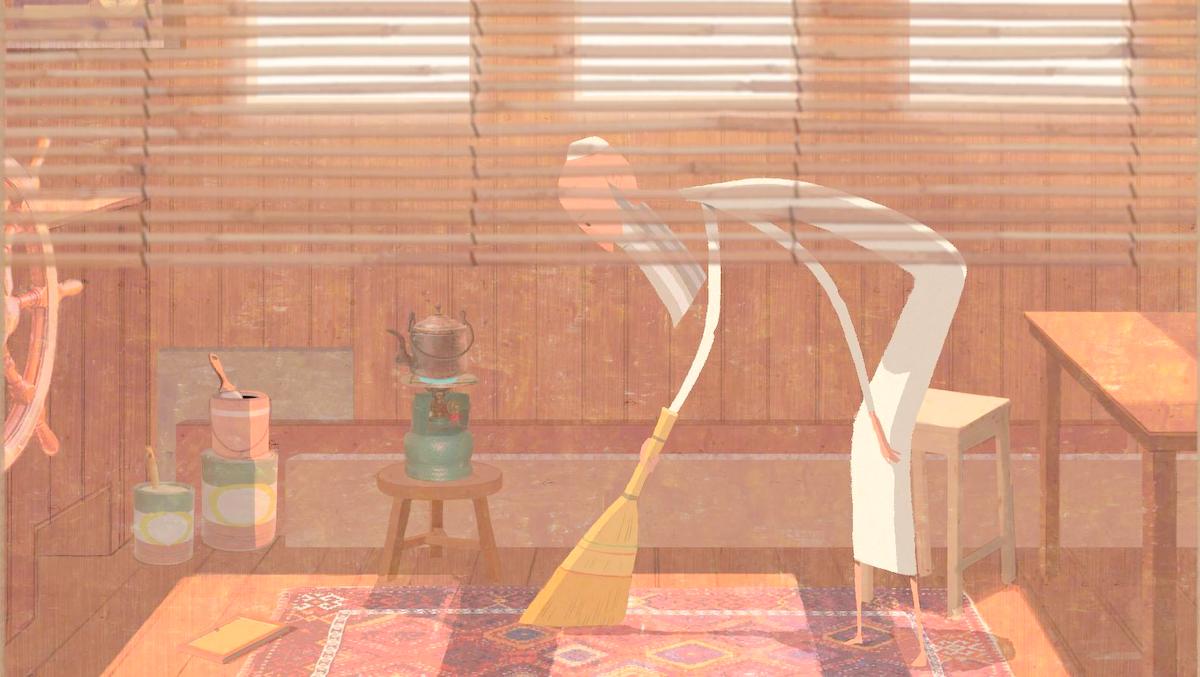
“The short animated film In the Shadow of the Cypress has received many international awards so far, including four Oscar-qualifying Best Animation prizes from Tribeca, Animayo, LA Shorts, and Spark Animation.”
indieactivity: How did you get into directing? How would you describe your style?
Shirin Sohani (SS): My entry into the world of art coincided with the start of my studies in graphic design at an art high school. I was very interested in illustration and wanted to tell stories through the illustrations I created. After a few years, I realized that I needed to enter the world of animation, where I could bring those storytelling images to life with movement, sound, and music, and thus I entered the world of cinema.
Technically speaking, we have almost always used the two-dimensional frame-by-frame technique in animation; however, we do not limit ourselves to any specific style and technique and have worked on our films with different styles and approaches each time. In terms of filmmaking style, we have always aimed for our films to reach the widest audience possible, not confined to a specific group or class; in other words, our films should be interesting to a broad range of people, from casual viewers to those who are professionals in cinema, particularly in animation.
Hossein Molayemi (HM): This is I took my first steps in the world of art when I was fifteen, by enrolling in an art high school. My major in high school was painting and my goal was to become a professional painter in the future. I pursued this goal for many years and even as an undergraduate university student majoring in graphic design, I still dreamed of becoming a painter. However, in the middle of my undergraduate studies, I gradually realized that, on one hand, painting was no longer a pristine art form, and also its global direction was very different from what I desired; on the other hand, it lacked the power and impact I had expected.
The Official Trailer for In The Shadow Of The Cypress Directed by Hossein Molayemi and Shirin Sohani
Therefore, I changed my path toward animation and began self-studying and working in animation production studios. Initially, my goal was to be an animator; however, after being admitted to a master’s program in “Animation Directing” at Tehran University of Art, I decided to focus more on filmmaking and directing. My first directing experience was my graduation film titled “Beetle the Little”. After graduating from university, we founded our own studio, and since then, I have been directing seriously.
In addition to what Shirin said about our style, I must say that explaining it is a bit challenging, and I think critics should comment on this. However, what I can say is that we do not wish to focus merely on our artistic and personal viewpoints or, on the other hand, only on impacting the audience. In fact, maintaining artistic values and caring about the audience are both equally important to us.
Why did you take on the visual development yourself, in addition to directing?
Hossein Molayemi (HM): In animation, we don’t have something called a casting director, especially for short and independent animated films. Actually, we faced a significant shortage of professional and skilled artists, particularly animators. In Iran, we don’t have the opportunity to choose from a large pool of professionals and leave others out. Many professionals, due to sanctions and poor economic conditions, have either abandoned the field of animation or work for very high wages. Therefore, apart from two professionals on our team, most of the people we worked with were semi-professionals or even non professionals, but they were very talented.
Working with non-professionals has its pros and cons. Since we were unwilling to compromise our standards, we had to invest more time and adopt creative methods to achieve a fully professional output from non-professionals. Thus, our criteria for selecting team members included enthusiasm, commitment, and talent. We chose many of our colleagues from our current or former students at the university, and tried to identify their areas of talent as quickly as possible. We were often amazed by the high abilities of these unknown individuals, and we are currently very pleased to have introduced these talented individuals to the professional world.
It is important to mention that in all areas of the project where we couldn’t find suitable colleagues or had to economize, we inevitably had to do all the work ourselves, which made the process longer. That’s why, in addition to writing and directing, Shirin and I took on producing the film, pipeline and production management, character and environment design, storyboarding, creating animatics, compositing, layout, color keys, editing, and even part of the animation ourselves.
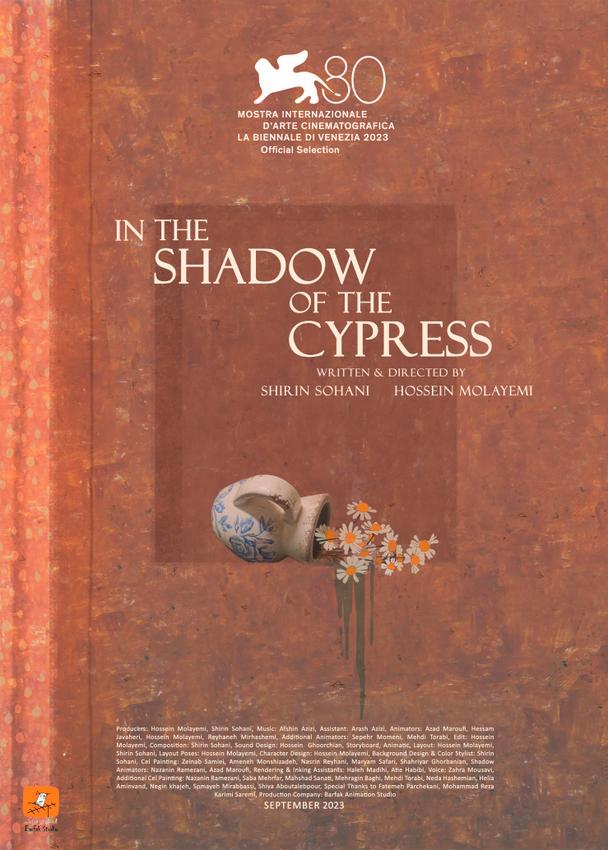
Without giving anything away, tell us a little bit about the script, how did you come up with the idea?
Shirin Sohani (SS): Since we intended to co-direct this film, we went towards a theme like family and migration, which was a shared concern for both of us. Our initial idea centered around a parent and a child, exploring their emotional relationships and the challenges between them. At first, the child’s migration was supposed to form the backbone of the story, as one of the important issues in today’s Iran is the emigration of a large segment of the young population. Nowadays, many young people in our country must choose between staying with their parents and family, or leaving the country for just an ordinary life.
Over time, we decided to drop the idea of migration. Additionally, our choice to set the story by the sea, which is the Persian Gulf, introduced new elements to the storytelling, such as the
whale, the traditional Iranian ship, and being near to the war-torn areas and fundamentally changed the narrative and film’s direction. Realities like the veterans of the Iran-Iraq War who are suffering from PTSD and the hardships faced by post-war generations were concerns for both of us. Our personal experiences—such as Hossein never having a friendly relationship with his father and my father being a war veteran—also indirectly influenced the evolution of the story.
We held numerous two-person sessions to examine the story from every angle; we challenged our narrative in various ways to identify and resolve its issues and contradictions. Simultaneously, we worked on the film’s visual development, which indirectly contributed to the story’s development as well. This process took about a year due to our intense attention to details. We wanted to be completely confident in the story before moving on to the next stages, knowing that otherwise, uncertainty about the story’s quality could lead to doubt, fatigue, and a lack of motivation during production.
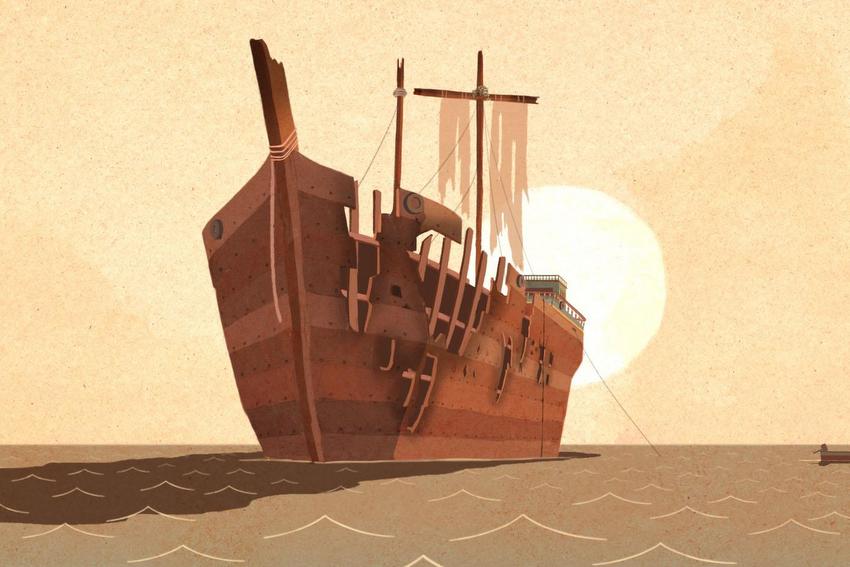
Who is “In the Shadow of the Cypress” for? Who do you think would enjoy it the most?
Hossein Molayemi (HM): If we are supposed to dedicate this film, we dedicate it to our parents and then to the veterans of the Iran-Iraq War, who still live in the shadow of war even after many years. However, if you’re asking who the audience for this film is, I should say that it doesn’t have a specific audience; anyone, regardless of age, gender, nationality, or social class, can be a viewer of our film. Many people have experienced emotional traumas themselves or through those around them, or they have contradictory feelings toward their loved ones; for instance, some people love each other, but simultaneously harbor hatred. Therefore, most people can identify and empathize with the characters in this film.
We can consider both ordinary individuals and the educated and intellectual segments of society as the audience for this film. The general audience can relate to the main story and its surface layers, while the more sophisticated and elite audience can connect with the deeper layers of the narrative. The fact that this film can engage both educated audiences and the general public has been an intentional decision.
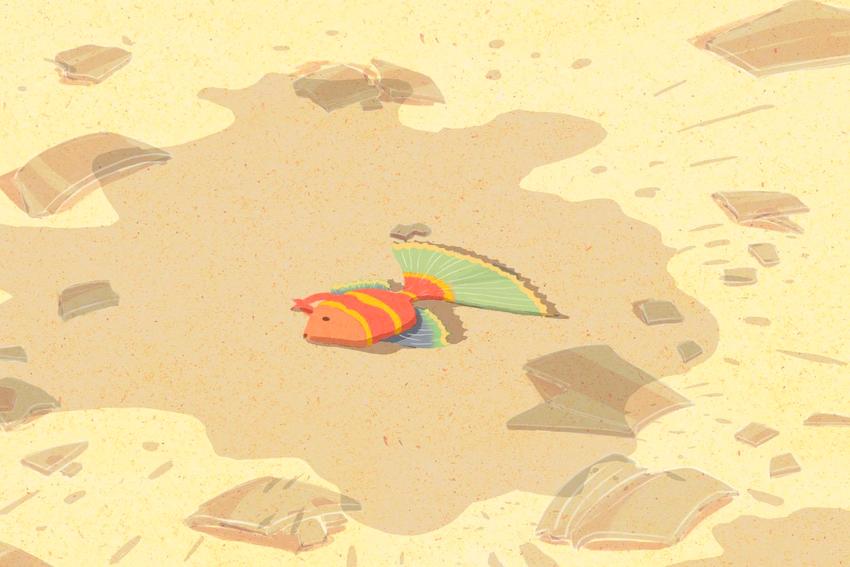
How long did it take to make the entire film? How many people worked on the film?
Hossein Molayemi (HM): From the initial stages to the final export, it took about six and a half years. If it weren’t for the numerous challenges we faced during the production of this film— such as budget constraints, severe sanctions, political and economic issues in Iran, the COVID pandemic, the Alopecia Universalis disorder that I was struggling with and its considerable costs, family problems, and so on—we might have been able to finish it in four years. However, completing this film in less than four years was not feasible.
Shirin Sohani (SS): The pre-production took about two and a half years, and the animating phase lasted approximately three and a half years. During the pre-production and most of the post production phases, it was just Hossein and me working on the film. In the third year, our main animator, Azad Maroufi, joined us and stayed with us until the end of the animation phase. In the fourth and fifth years, alongside COVID and remote work, two other animators joined us. By that point, we were a team of five; other members joined us in the sixth year, such as two additional animators and also other individuals who helped with color, shading, sound, and music for the film. In general, the main individuals who spent the most time on producing this film were four, including the directors, while the rest of the team collaborated with us temporarily and for shorter durations
How long was the post-production process?
Hossein Molayemi (HM): While some scenes were not yet animated or still had issues, we asked the sound designer and the composer to start working on the film due to our urgency to complete the final stages. Therefore, it’s a bit difficult to specify exactly how long the post-production process took. However, if we want to estimate the duration of the post-production phase, we can say that about the last year and a half was spent on compositing, sound design, music, editing, and finalizing the film’s retouches in all aspects, including backgrounds, animation, coloring and shading.
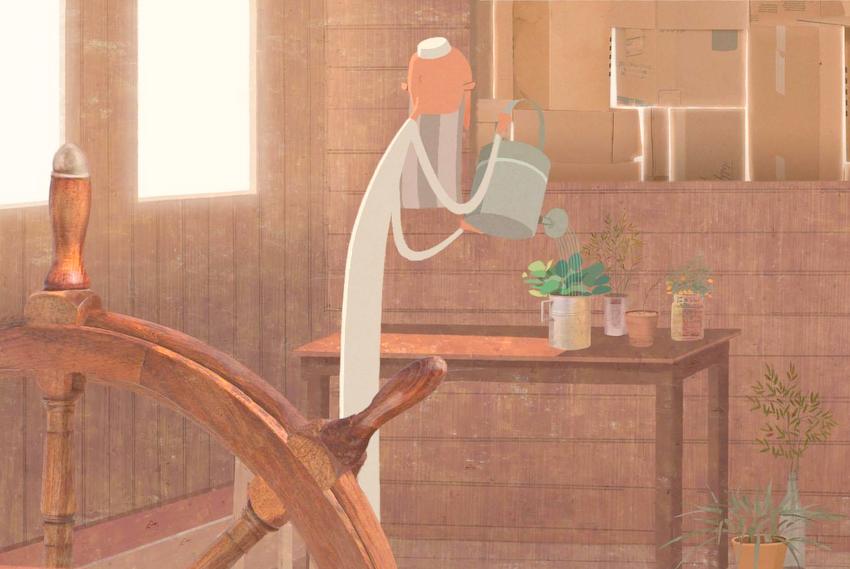
What are your goals with “In the Shadow of the Cypress”?
Shirin Sohani (SS): On one hand, we had never seen a good animated film made for this forgotten group of war victims (people suffering from PTSD); On the other hand, one of our goals was to create a creative, unique, valuable and original work of art. As you know, life is filled with ups and downs. By focusing on making the film, we engaged less with its unpleasant aspects. We enjoyed creating the film frame by frame, doing the concept design, and building a new world. The joy we derived from the process of creating this film, was part of our goals.
Hossein Molayemi (HM): One of our current objectives is to use this film to persuade potential producers and financiers to support our next film. If this film can succeed on its way to the Oscars, we could better convince investors and producers to help us in making our next project.
What’s next for you? What are you working on right now?
Shirin Sohani (SS): Although we haven’t made a final decision yet, our priority is to make a feature length animated film as our next project. However, we might produce a short documentary animation first, as making a feature film requires a significant budget. To be honest, as Hossein mentioned, one of our concerns regarding In the Shadow of the Cypress is to help the film be seen on the Oscar path. If the film succeeds in this regard, it will pave the way for our dream of making our first feature film. One of my and Hossein’s aspirations is to create at least one animated feature film before we die. Meanwhile, alongside thinking and working on our next film, we are also continuing the distribution process for In the Shadow of the Cypress.
What would you recommend to a new director at the beginning of his/ her journey? Any special courses, workshops, helpful books they can read?
Shirin Sohani (SS): Well, this depends on various factors. For example, the path of an experimental filmmaker is different from that of a director whose films connect with a broad audience. In general, books and workshops, despite being very useful, don’t teach us as much as making a film does. Ultimately, everything we learn must be put into practice. Making short films is a good way to test ourselves and gain self-awareness. We might not achieve that understanding in our first film, and it may take time to figure out exactly what we want.
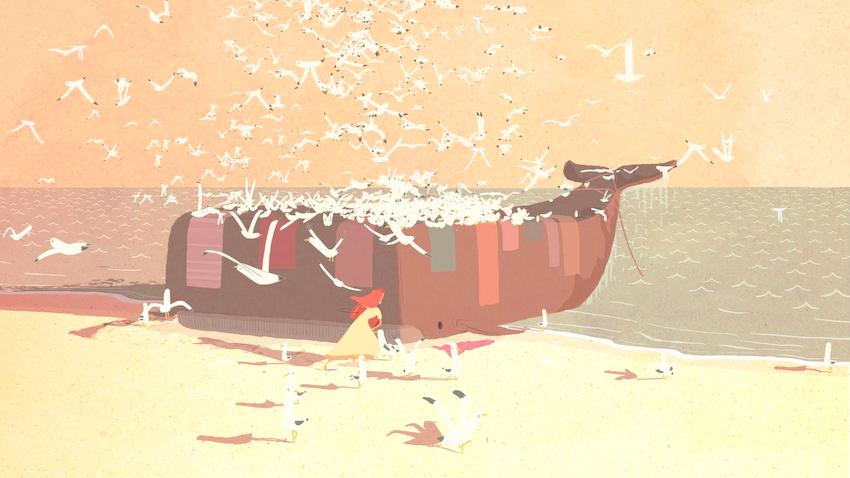
Of course, reading books, watching films, participating in workshops, continuing education at university, visiting galleries, and, on the other hand, paying attention to our inner selves and spending time on self-discovery are all very beneficial. They help us understand what we truly want to add to the world. However, we shouldn’t fall into the trap of excessive perfectionism. Therefore, I believe that making films and putting our learnings and observations into action should be given the top priority over merely studying and thinking. We should prioritize making
films so that we can learn more.
Hossein Molayemi (HM): One of my professors at university told me that if he were in my place, instead of trying to become famous quickly, he would focus only on filmmaking. So now, my advice is to just make films. Your observations and your trial and error are often more effective than any university, workshop, or book. Many great individuals do not have formal education, and even if they studied filmmaking, their knowledge doesn’t remain confined to university or college. They usually adopt a self-teaching approach and take charge of their own learning process. Of course, educational courses, workshops, and books can be very helpful. Additionally, we shouldn’t forget the vast resource of internet s one of the best means of learning.
Who is your favorite director? Why?
Shirin Sohani (SS): It’s a bit difficult for me to mention just one favorite director. Because I admire many directors in both live-action and animation. As for my favorite film, it’s also hard to choose. But, the animated feature Boy & the World was the only film that made me deeply think. “I wish I had made this.”
Hossein Molayemi (HM): To be honest, I have favorite films, not favorite directors. There are many films I love, and they are very different from each other and not comparable. For example, my criteria for liking a short film are different from those for a feature film. However, if I had to name just one film from all the ones I love. I would mention the animated feature film The Lion King. Which I have watched many times since my childhood. I should also mention that I admire Hayao Miyazaki. Not only for his films, but also for his passion and dedication to filmmaking.
What advice would you give directors around the world?
Hossein Molayemi (HM): I am not in a position to advise anyone, but I recommend that in a world full of quantity, it would be better for you to prioritize quality. Instead of making twenty good films, create five masterpieces. Currently many average or even good films are being produced around the world, but today’s world needs quality. Focus more on the idea than on the technique; make your films honestly; This might make your path to success longer, but you will create more valuable works that are likely to endure in history. Additionally, I want to remind animation filmmakers that we are filmmakers and cinematographers; we should not forget to learn from live-action cinema.
Shirin Sohani (SS): Shirin Sohani: Paying attention to trends favored by festivals is fine, but don’t focus only on trends just to achieve success more quickly.
Tell us what you think of the interview with Hossein Molayemi and Shirin Sohani. What do you think of it? What ideas did you get? Do you have any suggestions? Or did it help you? Let’s have your comments below and/or on Facebook, Instagram, or Twitter.
Socials
IMDb
LinkedIn
Instagram
FILMMAKER INTERVIEWS









